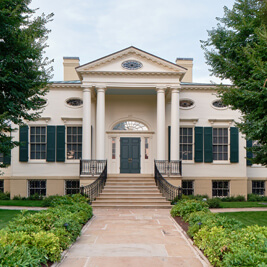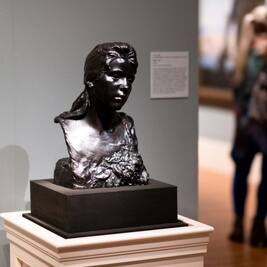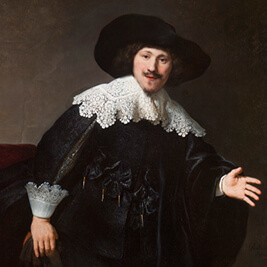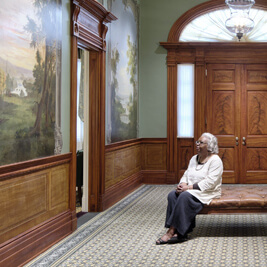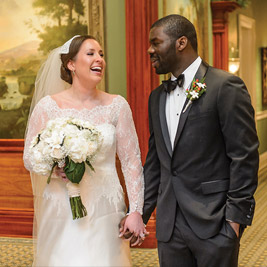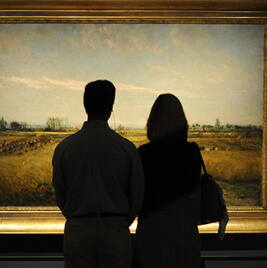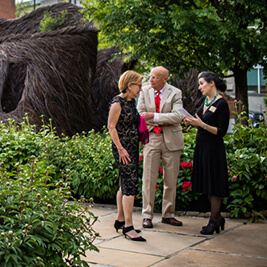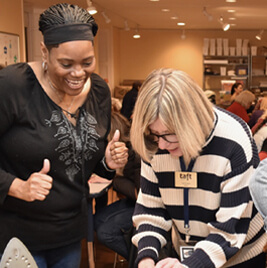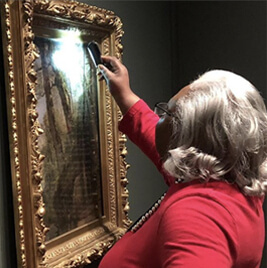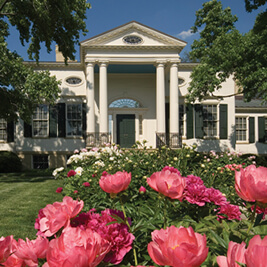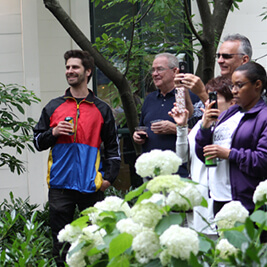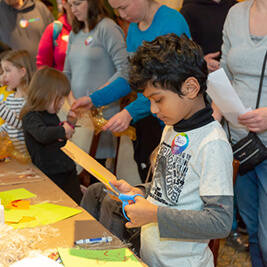- Do + See
- Dine + Host
- Give + Join
- Educate + Learn
Highlights from the Taft Collection | Winter 2021
A Closer Look
Thomas Gainsborough, Wooded Landscape with Milkmaid, Rustic Lovers, Herdsman, and Farm Animals
A milkmaid, a young couple, and a shepherd join cows, sheep, goats, and dogs in a forest clearing. With its serene mood, Thomas Gainsborough’s painting seems to communicate a belief that the countryside was a relaxing antidote to urban life. Gainsborough sketched the landscape while outdoors, but painted canvases like this one in his studio. To aid his depictions of imagined landscapes, he constructed tiny tabletop compositions, placing sand or clay to simulate the ground, snippets of mosses and lichens to serve as bushes, lumps of coal as rocks, scraps of mirror for water, and broccoli stems as trees.
Pierre Roussel, Commode
This French commode—a chest of drawers intended for the storage of personal items—combines functionality with fine craftsmanship. It is distinguished by the use of gilded bronze mounts and marquetry, the latter a technique in which craftsmen set thin sheets of wood, known as veneers, onto the surface of an object, arranging them into complex designs. Here, the design shows roses, carnations, tulips, and other blossoms issuing from a pair of cornucopia. On the top drawer, two parrots delicately perch on flower stems. Pierre Roussel, a master cabinetmaker, chose rosewood veneers to surround this central scene, as if framing a work of art.
China, Qing dynasty (1644–1911), Qianlong reign (1736–1795),Vase with Taotie Masks
A vibrant turquoise glaze covers this vase. Stylized plantain leaves adorn the slender base and trumpet-form neck; the medicinal herb plantain produces an abundance of seeds and symbolizes fertility in Chinese culture. Taotie masks—consisting of two large eyes below horns flanking a nose with flaring nostrils—decorate the knop, or central rounded element. The repeating S-shaped design circling above and below is known as the cloud and thunder pattern. Because the rain from thunderstorms promises plentiful crops, this pattern represents good fortune. The auspicious plantain leaves, taotie masks, and clouds on this vase combine to allude to the prosperity and bounty that nature provides.
Lawrence Alma-Tadema, A World of Their Own, 1905
A couple languidly reclines on a blooming meadow overlooking the sea. Red flower playfully tucked behind his ear, the man gazes adoringly at the woman. She wryly looks out of the frame at us, paying him no attention. Their draped costumes and the Mediterranean-like setting hint that the “world” referenced in the painting’s title exists in Greco-Roman antiquity. Lawrence Alma-Tadema had become enamored with the ancient Roman era after visiting the ruins of Pompeii in Italy. With this diminutive canvas, he invites us to imagine escaping the demands and constraints of modern life to inhabit an idealized, sensual version of the past.
